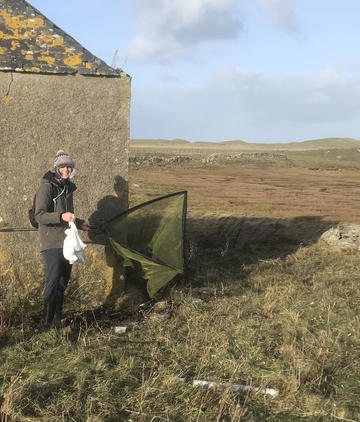New research has found the living wild ancestors of the common domestic and feral pigeons. The wild Rock Dove (Columba livia) has been found alive in British and Irish islands, providing insights into how common pigeon species came to be.
‘Feral’ pigeons originate from escaped domestic birds and can be seen in towns and cities all over the world. These common pigeons are descended from wild Rock Doves, who nest in sea caves and mountainous areas.

Feral pigeon (left) and a wild Rock dove (right)
Despite the success of feral pigeons, the Rock Dove has been declining throughout its global range – which once encompassed vast areas of Africa and Europe. Their decline has been hard to study because of extensive interbreeding and replacement with feral pigeons.
Rock Doves now persist in only small, relict populations where feral pigeons have not yet been able to colonise. In fact, due to the interbreeding of feral pigeons and Rock Doves, and their resulting hybrids, many birdwatchers claim that there are no truly wild Rock Doves left. However, there are potential colonies in certain places, including in Europe, the Faroe Islands, parts of the Mediterranean and parts of Scotland and Ireland.
Will Smith and colleagues at the Department of Biology in Oxford studied possible Rock Dove populations from certain Scottish and Irish regions by analysing their DNA. They wanted to determine whether these birds were truly ‘wild’, and also how much genetic influence from feral pigeons different populations have experienced.

A member of the team on Bhàlaigh (Vallay) in the Outer Hebrides
Through a combination of expeditions and collaboration with British Trust for Ornithology bird ringers, they caught both feral pigeons and putative Rock Doves in places like North Uist (Uibhist a Tuath) in the Outer Hebrides, Orkney, and Cape Clear Island.
The team took feather samples from the birds for DNA analysis. By sequencing the pigeons’ DNA, they were able to show the differences between feral pigeons and Rock Doves, and also measure the degree of interbreeding between the two forms of the species.
They found that the Rock Doves of the UK and Ireland descended from the ancestral lineage from which all feral and domestic pigeons originate. Whilst the Rock Doves in Orkney for example have experienced extensive interbreeding with feral pigeons and are therefore likely bred-out to extinction as a distinct lineage, Rock Doves in the Outer Hebrides remain almost free of feral pigeon influence. This came as a surprise given the long-term presence of feral pigeons in Europe. But worryingly, feral pigeons are being spotted on these islands with increasing frequency, so it might be that the distribution of wild Rock Doves in the UK continues to shrink.
Understanding their distribution and genetic status will help to monitor the remaining Rock Dove populations, and encourage efforts to understand potential relict populations across their global range. This will allow us to protect an animal that, as one of the first birds to be domesticated, is an important part of the human story. Increasing our understanding of ‘extinction by hybridisation’ will help conservation efforts trying to prevent many other animals and plants from undergoing the same fate as the Rock Dove.
To read more about this research, published in iScience, visit: https://doi.org/10.1016/j.isci.2022.104620